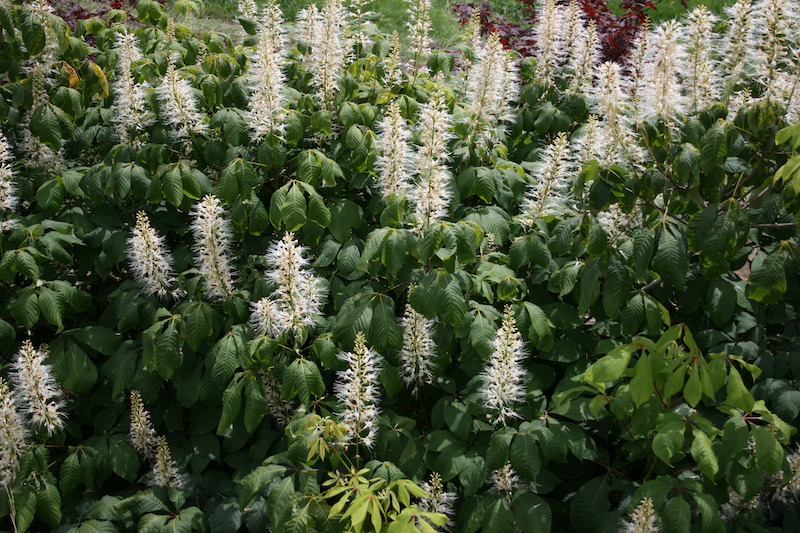Bottlebrush shrub is the common name for Callistemon spp and Aesculus parviflora, a small variety of Buckeye. Callistemon is a subtropical evergreen shrub native to Australia. It grows well in zones 9-11 in the United States and makes for an interesting container-grown shrub.
Bottlebrush Buckeye is native to the southern and eastern parts of the United States. This shrub is deciduous and along with its spectacular flower spikes, it features fabulous fall foliage color.

What You Need To Plant Bottlebrush
- Transplanting spade or small head shovel
- Compost or other organic material for mulch
- Nearby water source
- Well-draining soil that is acidic on the pH scale.
- Organic compost for amending any heavy soil that drains slowly.
Where to Plant Bottlebrush
Callistemon Bottlebrush requires full sun (at least 6 hours a day) and fast-draining soil with moderate fertility. Bottlebrush Buckeye prefers a location with part to full shade and fertile loam. The root systems of Callistemon and Bottlebrush Buckeye are fibrous and grow quite shallow in the soil, allowing these shrubs to be planted near foundations of buildings, driveways, or sidewalks.
Bottlebrush Spacing
The large height and width of the Bottlebrush Buckeye make it appropriate as a single specimen in a large garden. Allow at least a 10-foot radius around this shrub when planting near other trees or shrubs. Both Callistemon spp. and Fothergilla spp. are much more compact in height and width. Space the plants 4-6 feet apart, center on center, to create a hedge.

Steps To Plant Bottlebrush
Step 1 - Choose a location with acidic soil that is free draining without heavy clay. Callistemon requires at least 6 hours of full sun and Bottlebrush Buckeye prefers a cool, part-shade to full-shade location.
Step 2 - Dig a hole that is twice as wide and the same depth as the rootball.
Step 3 - Remove the shrub from its pot and gently tease loose any roots that are circling the rootball. This will encourage roots to grow outward from the shrub.
Step 4 - Place the rootball in the hole so the base of the shrub is level with the soil.
Step 5 - Gently backfill the soil around the rootball, holding the plant so it sits straight upright.
Step 6 - Tamp down the soil around the root zone, making sure that no large air pockets remain.
Step 7 - Water the root zone well until all of the soil is fully saturated. Allow for one to two gallons of water.
Step 8 - Mulch with 3-4 inches of organic material around the plant, spreading it at least one foot from the base of the shrub to cover the whole root zone. Do not place mulching material near or on growing points.
When to Plant Bottlebrush
Early spring or early fall are the best times to plant shrubs in most parts of the United States. Planting in cooler weather ensures that the plant will be less stressed physically by the transplant and (hopefully) less supplemental watering will be needed to establish a strong root system. Transplanting large plants on overcast days also helps to lessen any transplanting shock. Planting during extreme heat or dry periods is not recommended. Leave the plants in their containers in a partially sheltered location, and keep them well watered until you can plant them during cooler weather.
Transplanting Bottlebrush
Bottlebrush shrubs are woody and cannot be easily divided. The best method of propagating Callistemon or Aesculus is by taking softwood cuttings in mid-summer. These cuttings will take quickly when placed in a shady spot and kept well watered. Grow the cuttings in pots for a year or more until the plants are a good size to compete with weeds in the garden.
 |
Author Robbin Small - Published 5-14-2023 |
